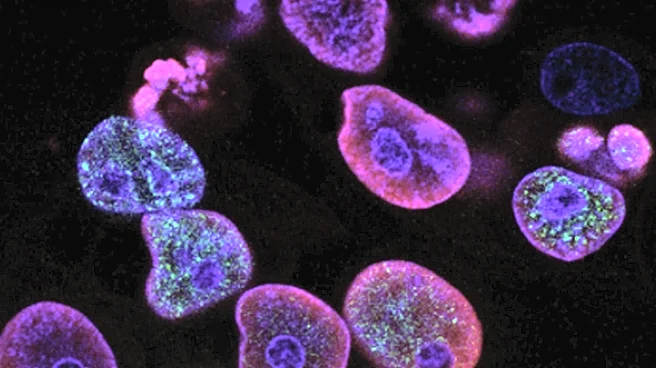What is the story about?
What's Happening?
Recent studies have identified transferrin (TF) as a promising drug candidate for treating dry age-related macular degeneration (AMD). TF regulates iron homeostasis in the retina, preventing iron-induced oxidative stress and protecting retinal cells. Research shows TF's protective effects against oxidative stress-induced retinal pigment epithelium (RPE) dysfunction, highlighting its potential in managing AMD.
Why It's Important?
The identification of transferrin as a potential treatment for AMD is crucial as it addresses the unmet need for effective therapies for this common eye condition. AMD is a leading cause of vision loss among older adults, and TF's ability to mitigate iron-induced damage could significantly improve patient outcomes. This discovery may influence the pharmaceutical industry by driving research and development of iron-chelating agents for ocular diseases.
What's Next?
Further research and clinical trials are necessary to confirm transferrin's efficacy and safety in treating AMD. Successful trials could lead to regulatory approval and commercialization, offering a new therapeutic option for patients. Researchers may also explore transferrin's applications in other iron-related ocular conditions.
Beyond the Headlines
The use of transferrin in AMD treatment raises questions about the broader implications of iron regulation in ocular health. Understanding the role of iron in retinal diseases could lead to new insights and therapeutic strategies for various eye conditions.
AI Generated Content
Do you find this article useful?














